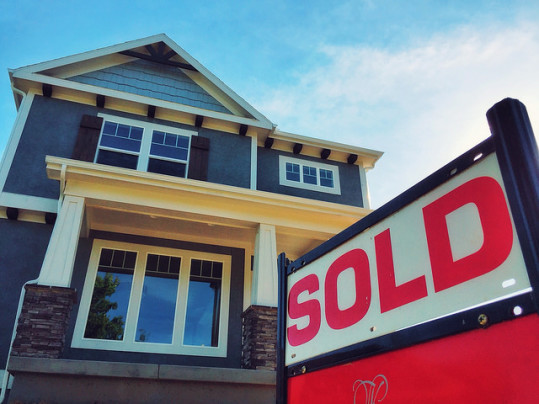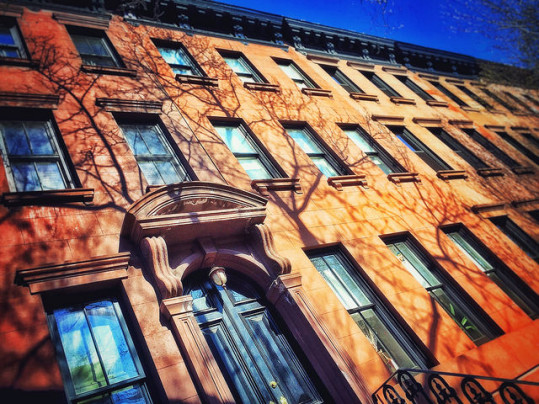The S&P Case-Shiller U.S. National Home Price Index – considered the leading measure of U.S. home prices – has been tracking home values for nearly 30 years. According to their most recent release, national home prices are up 5.1 percent year-over-year, with the biggest price increases seen in the West. David M. Blitzer, managing director and chairman of the index committee at S&P Dow Jones indices, says home prices show no sign of slowing down. “Home prices continued to rise across the country led by the West and the South,” Blitzer said. “In the strongest region, the Pacific Northwest, prices are rising at more than 10 percent; in the slower Northeast, prices are climbing a bit faster than inflation. Nationally, home prices have risen at a consistent 4.8 percent annual pace over the last two years without showing any signs of slowing.” Overall, Blitzer believes the residential real estate market is in good shape, noting improvements in housing starts and home sales. Among individual cities included in the index, Denver, Seattle, and Portland led the way with the biggest year-over-year gains in home values. More here.
Archive for August 2016
Hot Housing Market May Cool This Fall
The housing market had a strong first of half of the year. In fact, according to Jonathan Smoke, Realtor.com’s chief economist, it was the best spring in a decade. However, a number of factors will likely cause things to slow down in the second half of the year. “As a result of a very strong spring and summer leaving us with low inventories, mortgage rates potentially moving back up, and the presidential election creating more uncertainty, we may see a weaker housing market in September, October, and November,” Smoke says. “However, given the performance so far this year, 2016 should end as the best year in a decade.” And, though things may slow down in the months ahead, that’s no reason to believe the real estate market will have a bad 2017. In fact, Smoke says housing should remain strong next year, unless there is a substantial increase in mortgage rates over a short period of time. But that type of rate increase should only occur if the economy is also strong. And, if that’s the case, then lower unemployment and higher wages should help offset the effects of higher rates. Smoke feels that positive conditions and favorable demographics will keep the housing market strong and healthy for at least two more years. More here.
Rising Rent Motivates 1st Time Buyers
According to a recent survey of potential home buyers, the cost of renting is the main motivator for almost half of all first-time buyers and nearly a quarter of respondents overall. That is nearly double what it was last year at this time. That’s mostly due to the fact that, in recent years, rent has been rising at a rapid pace and – despite the fact that home prices have also been increasing – buying a home has generally remained the more affordable choice in many markets. That, and mortgage rates that have been hovering near record lows for some time now, are driving renters to the housing market. But that doesn’t mean there still aren’t concerns about the cost of buying a home. In fact, affordability was named by 28 percent of survey participants as their top concern, with too much competition and a lack of homes to choose from following close behind. For first-time home buyers, in particular, affordability is a growing worry. For that reason, inventory levels and new home construction are the keys to the current housing market. As more homes become available for sale, the rate of price increases should begin to moderate, which will help balance the market and provide more opportunities for buyers. More here.
Sales Of Previously Owned Homes Fall 3.2%
Sales of previously owned homes fell in July after four consecutive months of increases, according to the National Association of Realtors. The 3.2 percent decline was led by a 13.2 percent drop in the Northeast. The Midwest and South also saw decreases, while the West climbed 2.5 percent from the month before. Lawrence Yun, NAR’s chief economist, says inventory and affordability are behind the decline. “Severely restrained inventory and the tightening grip it’s putting on affordability is the primary culprit for the considerable sales slump throughout much of the country last month,” Yun said. “Realtors are reporting diminished buyer traffic because of the scarce number of affordable homes on the market, and the lack of supply is stifling the efforts of many prospective buyers attempting to purchase while mortgage rates hover at historical lows.” But though July’s numbers fell, home sales are still expected to finish the year at their strongest pace since the housing crash and the number of homes available for sale actually improved during the month – though only by 0.9 percent. Currently, unsold inventory is at a 4.7-month supply at the current sales pace. A six month supply is considered healthy for the housing market. More here.
Mortgage Rates See Slight Increase Last Week
According to the Mortgage Bankers Association’s Weekly Applications Survey, average mortgage rates moved up last week across all loan categories, including 30-year fixed-rate mortgages with both conforming and jumbo balances, loans backed by the Federal Housing Administration, and 15-year fixed-rate loans. The increases, though slight, were enough to cause a dip in mortgage activity. Refinance demand – which is typically more sensitive to rate increases – fell 3 percent from the previous week, while purchase activity was down 0.3 percent from the week before. But though demand was slower on a week-over-week basis, it is still up significantly from last year when mortgage rates were higher. For example, refinance demand is now 45 percent higher than at this time last year and requests for applications for loans to buy homes are nearly 8 percent above last year’s level. Unfortunately, though rates remain low and buyer demand is strong, a lower-than-typical number of homes on the market could be suppressing sales which, despite this, are on track to have their best year in a decade. The MBA’s weekly applications survey has been conducted since 1990 and covers 75 percent of all retail residential mortgage activity. More here.
Sales Of New Homes Surge In July
New numbers released by the U.S. Census Bureau and the Department of Housing and Urban Development show sales of new single-family houses up 12.4 percent in July from the month before. The improvement puts new home sales at a nine-year high. Rebounding strength in the housing market has analysts optimistic about the future. Millan Mulraine, deputy chief economist at TD Securities in New York, told Reuters that the residential real estate market is now one of the economy’s strongest sectors. “A very rosy picture is beginning to emerge on the housing market, pointing to sustained buoyancy in the sector’s recovery, which remains one of the few bright spots for the U.S. economy,” Mulraine said. But though sales have been strong, the number of homes being built still lags behind other housing measures, which tempers some of the optimism surrounding this year’s solid sales performance. Still, July’s gain pushed new home sales 31.3 percent higher than they were at the same time last year and beat economists’ expectations by nearly 75,000. Economists surveyed prior to the release forecast sales to fall in July. Also in the report, the median sales price of new houses sold in July was $294,600; the average sales price was $355,800. More here.
Housing Market Conditions Mixed But Steady
Today’s housing market is a mixed bag. On the one hand, a better job market, improving wage growth and low mortgage rates have driven buyer demand higher and made an increasing number of Americans consider buying a house. On the other, too few homes for sale are driving prices upward and new home construction isn’t keeping pace with the increase in demand. Fortunately, in some cases, these factors help balance each other out. For example, though prices continue to rise in most markets, mortgage rates remain low – making higher prices slightly more manageable. All in all, Fannie Mae’s chief economist, Doug Duncan, says the real estate market isn’t likely to change too much one way or the other before the end of the year. “Housing market fundamentals remain a mixed bag. During the second quarter of 2016, both new and existing home sales rose to expansion highs, while single-family starts pulled back, remaining historically low for an expansion,” Duncan explained as part of the group’s most recent Economic and Housing Outlook. “Tight housing inventory from a lack of new construction continues to create affordability challenges, particularly at the lower end of the market … We expect home buyers will benefit from improving job and wage growth, more favorable lending standards, and continued low mortgage rates through the rest of the year.” More here.







